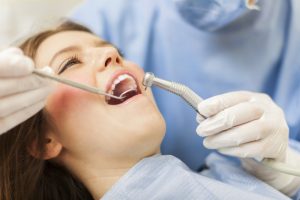What are wisdom teeth? And what is the secret behind their names?
Wisdom teeth, also known as third molars, are the last four teeth to emerge in your jaw. They erupt in the upper and lower jaws at the most posterior areas, completing the set of 32 permanent teeth on both sides.
Generally, most people develop four wisdom teeth, but some or all of the third molars may never form, making them the most commonly missing teeth in adult mouths. In rare conditions, a person can have more than four wisdom teeth.
Wisdom teeth won’t make you wiser; they have been called “wisdom teeth” because they usually emerge in late adolescence or at a more mature age when you’re older, around ages 17 to 21.
Why do we have wisdom teeth?
Anthropologists say our ancestors needed wisdom teeth, since they had to chew raw and rough foods, such as hard items like nuts, hunted animal meats, and foraged plants, that wore down their teeth, so wisdom teeth grew to give them additional chewing power.
Nowadays, wisdom teeth are regarded by biologists as vestigial organs, which is a term used to describe organs that have become obsolete due to evolution. After the change in our diet, eating softer food and having modern tools to cut up and cook our food, making it easier to chew, wisdom teeth outlived their purpose, causing narrowing in our jaws, leaving no space for wisdom teeth to emerge properly and become partially or fully impacted.
Keep it or remove it?
The decision to keep or remove wisdom teeth varies from one patient to another. If the wisdom tooth emerges without any problems and without affecting the adjacent tooth, it can be retained with regular brushing and flossing, along with regular dental visits every couple of months to evaluate your overall dental health and wisdom tooth condition, as there is a risk of developing problems later.
In other cases, the wisdom teeth may cause pain, but extraction can be avoided with minimally invasive treatment options and improved oral hygiene habits. In such a case, the tooth may erupt successfully and there is enough space for it, but it is covered with gingival tissue, causing pain when biting on it. This can be handled with a small flap of the inflamed gingival tissue covering the tooth.
However, there are certain situations where the extraction of wisdom teeth is mandatory. According to the American Association of Oral and Maxillofacial Surgeons (AAOMS), “If there is insufficient anatomical space to accommodate normal eruption, the removal of such teeth at an early age is a valid and scientifically sound treatment rationale based on medical necessity.” They also state that “third molars that have links to causing disease should undergo removal.”
When a tooth fails to erupt and gets impacted, either partially or fully, and covered by gingiva or bone, it can cause a variety of issues that necessitate its removal, including:
- Tooth decay is difficult to clean and fix.
- Damage to adjacent teeth:
The second molar next to the wisdom tooth, becomes more difficult to clean and prone to infection.
- Pericoronitits:
If the tooth erupts partially, through the gingival tissue it will be covered by soft tissue called the operculum. If food and bacteria become trapped between the operculum and the tooth, it will cause an infection called pericoronitis, which causes red swollen gum tissue, bad taste and smell, pain when biting on the infected area, and sometimes pus oozing from the area.
- Deep periodontal pockets or recession around the adjacent tooth
- Pain:
They may cause significant pressure on the surroundings, causing pain, headache, and sometimes jaw stiffness and inability to open the mouth in which case antibiotics should be taken before any surgery.
- Cysts can damage the jawbone, teeth and nerves.
Removal of the tooth, how is it performed?
Depending on the status of your wisdom tooth, there are two techniques for removing it after you’ve decided to extract it. Antibiotics may be administered before surgery if there is edema, infection, difficulty swallowing or breathing, fever, or severe pain, to help keep an infection from getting worse or spreading for a short time.
Direct simple removal
If your tooth has fully erupted without gingival or bony tissue coverage, yet it has other problems such as:
- Caries that is difficult to restore due to the posterior position of the tooth
- Causing pressure on the adjacent second molar teeth
- Orthodontic purpose
- The wisdom tooth is a non-functional tooth, meaning it has no opposing teeth and is therefore useless
In the conditions mentioned above, the tooth is extracted without any surgical intervention by administering anaesthesia and extracting the tooth.
Surgical removal
In cases of partial or full impaction of the wisdom tooth, where it is covered by gingival or bony tissue, the tooth can not be removed without surgical intervention, it requires flap elevation and sometimes bone removal to make a window through which the tooth can be removed. Stitches are used to close the surgical site and promote healing of the overlying tissue.
What should you expect after an extraction?
As with any other extraction, there may be some complications that can happen that range from mild to severe and necessitate a visit to your dentist to perform the proper treatment.
Mild complications
- Pain
- Swelling
- Bleeding
- Bruising
More severe complications
Although the postoperative recovery is usually uneventful, complications may occur, including:
- Alveolar osteoitis (dry socket):
If you smoke, touch, or rinse the area after extraction, this will lead to failure in the formation of a blood clot at the extraction site, exposing the bone and causing severe throbbing pain, inflammation, and bad breath. This usually occurs two to five days after the extraction.
- Numbness or Paraesthesia:
If the adjacent nerves are injured during the extraction procedure, it can result in temporary or permanent paraesthesia, depending on the severity of the injury. Depending on the affected nerve, numbness can occur in the lip, cheek, or tongue.
- Fracture of the maxillary tuberosity, mandible, or adjacent teeth during the surgery
- Oro-antral communication that occurs after maxillary sinus perforation
- Injury to the temporomandibular joint after trauma to the area
- Stiffness or trismus of the jaw as a result of swelling at the surgical site
- Hemorrhage that occurs after an injury to the inferior alveolar artery
During the recovery time, dos and don’ts?
To avoid postoperative complications, it is critical to follow the underlying instructions:
Within the first 24 hours:
- Pressing on the sterile gauze for at least half an hour, it is normal to have some blood oozing from the extraction site
- No smoking for the next 24 hours in simple extraction and one week in surgical extraction because it will delay the healing process and increase the chance of postoperative pain and complications
- No spitting or mouth rinsing
- Eating on the other side
Within the next week (2–5 days) following the surgery:
- Take your pain killers as prescribed by your doctor to relieve any postoperative pain and discomfort, in more complex situations antibiotics may be prescribed
- Mouth rinsing using a saline solution or antibacterial mouthwash
- Due to difficulties in eating and opening the mouth, it is preferable to eat soft and cold or warm foods or liquids such as soups, smoothies, and yogurt. It is important to stay well-nourished to speed up the healing process
- Avoid drinking through a straw
- Avoid eating hot and spicy foods
- Avoid foods that can become entangled in the extraction socket, such as nuts, rice, seeds, and popcorn
- Avoid using tobacco and alcohol
- Applying ice packs for the first 24 hours every 15 minutes to help constriction of blood vessels and reduce swelling and bleeding
- Do not engage in kinetic activities or excessive exercise for three to four days after surgery
- est and allow the area to heal
- If you have stitches, o to the doctor after a week to have them removed
Initial healing after wisdom tooth extraction usually takes three to five days, after which symptoms begin to fade, and complete gum healing may take three to four weeks. It is critical to see your dentist if you are experiencing any unpleasant symptoms. If you are looking for a dentist in Canberra please feel free to contact us.













